One of Flowr’s new actions in the January 2025 release is ‘PDF – Extract Table Data‘. Now, you can effortlessly extract table data from PDF documents with the power of Encodian Flowr and Power Automate!
This blog will explore extracting inventory data from an email attachment and adding it to a SharePoint list. Let’s explore the scenario in more detail: the head office must manage inventory from their different stores. Each store must complete a monthly inventory count before emailing the results to the head office. The data in the inventory PDF reports must be added to an ‘Inventory’ SharePoint list for historical reporting.
The data source we will be populating is an ‘Inventory’ SharePoint list. The list has been configured to capture all the inventory details for each vendor.
For this example, the table is flat, so no lookups to other tables are used (or required).

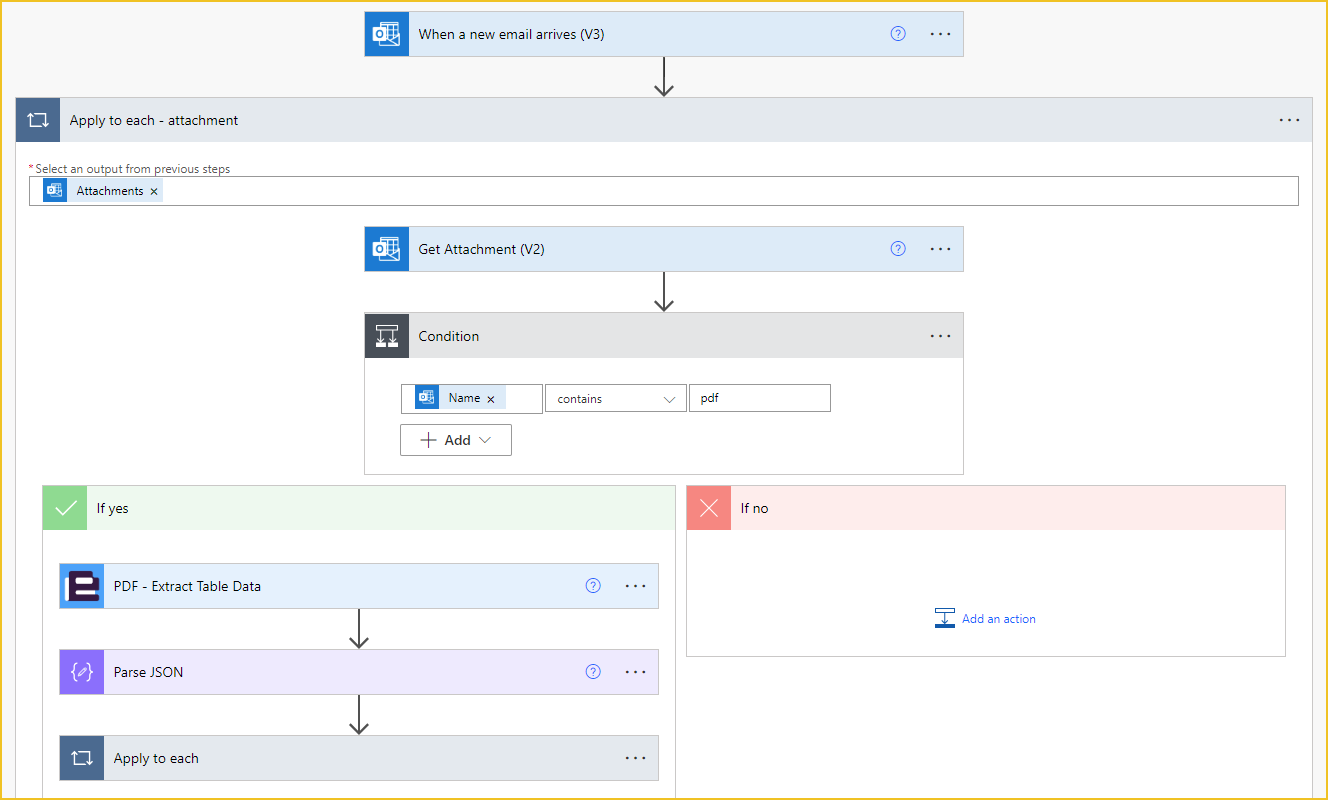
The Power Automate flow is triggered when an email is received which contains an attachment and has the word ‘Inventory’ in the subject line. I have also specified the sender’s email addresses to filter the trigger further. Each vendor’s email address can be added here (I am using only one for this demo).
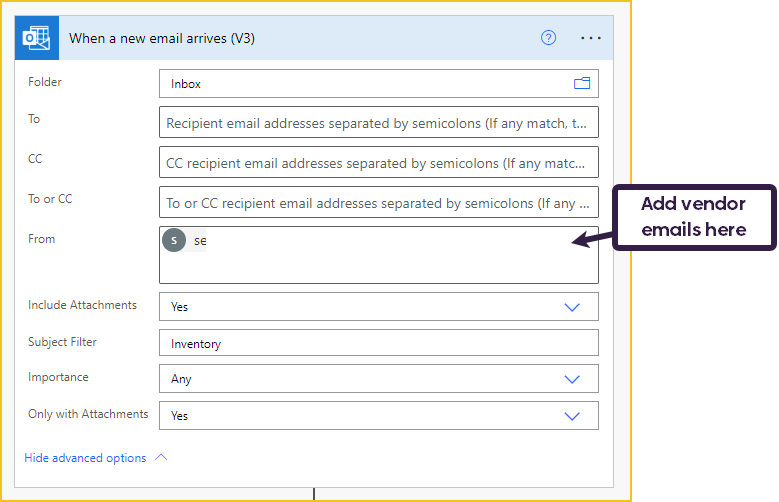
Power Automate doesn’t just capture email attachments; it will also capture any images used in the email body or signature. We must filter out the other file formats to only deal with the attached PDF document.
Firstly, we need to obtain the content of the email attachment. We can use the ‘Get Attachment (V2)’ action. The ‘Message Id’ and ‘Attachment Id’ are outputs from the trigger action. When you add the attachment ‘Id’ dynamic content, the action will be placed inside an ‘Apply to each’ loop. This is because there can be multiple attachments identified in an email, each with its own attachment ‘ID’, so we need to loop through each one.
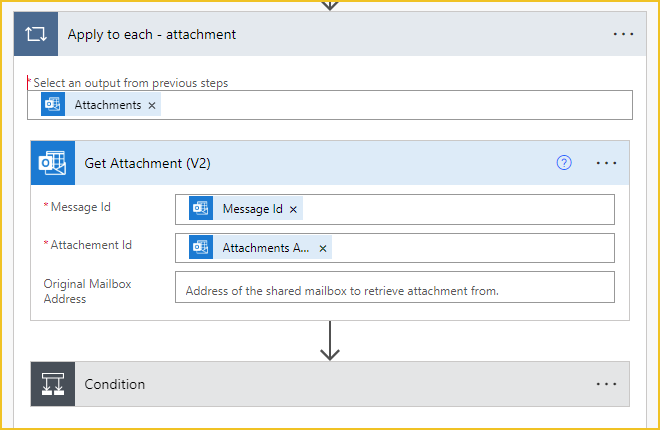
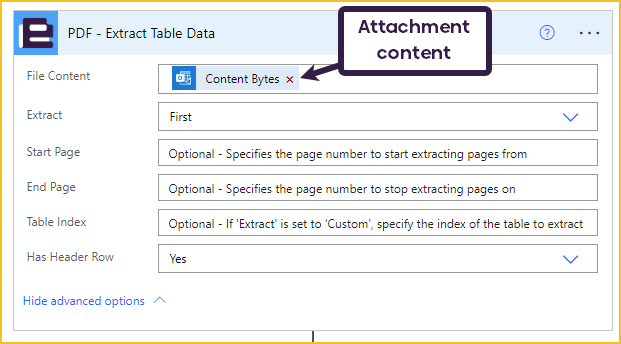
Once we have the attachment content, we also have the file name and its extension. We can use this to determine whether the attachment is a PDF. If the attachment is a PDF, we can continue with the rest of the flow; if it isn’t a PDF, there will be no further actions, and the loop will move on to the next identified attachment.
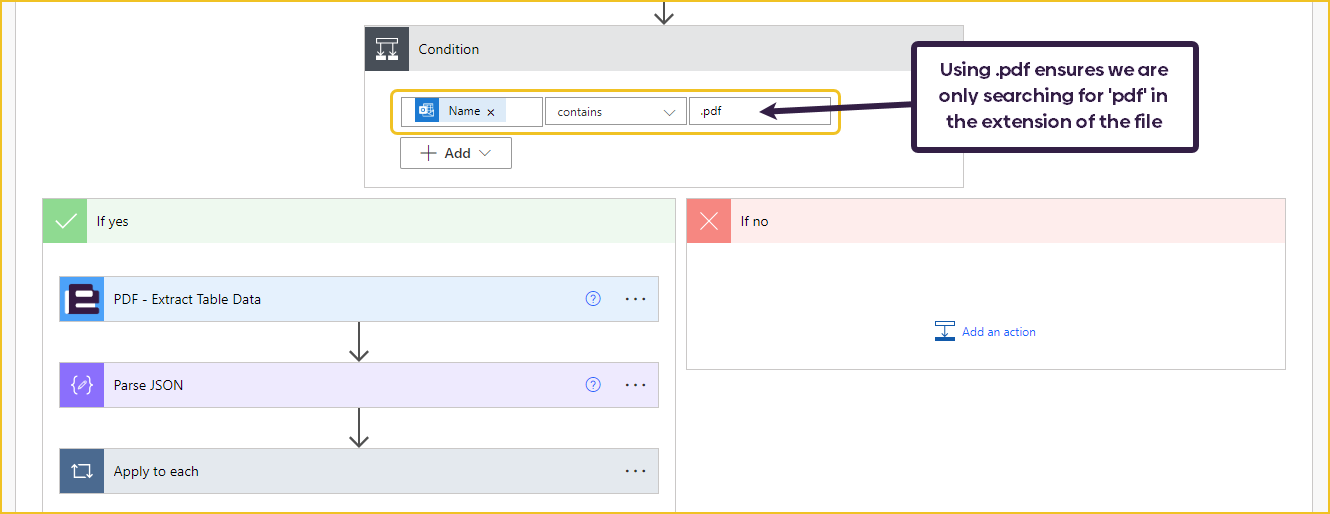
Once we have the attachment content, we can use the Encodian Flowr action ‘PDF – Extract Table Data‘. With this action, you can specify particular pages from which to extract table data and set whether the table has a header row.

The results from the Flowr action will look like this:
[{"Product ID":"P1234 ","Product Name":"Wireless Mouse ","Quantity":"50 ","Unit Price":"15.99 ","Vendor":"TechCorp "},{"Product ID":"P5678 ","Product Name":"USB Keyboard ","Quantity":"30 ","Unit Price":"25.49 ","Vendor":"TechCorp "},{"Product ID":"P9101 ","Product Name":"HDMI Cable ","Quantity":"100 ","Unit Price":"8.99 ","Vendor":"TechCorp "}]
The result is JSON data contained within a string, which we need to parse so that we can access the values more easily. We can do this using the ‘Parse JSON’ action. The JSON schema can be generated simply by copying and pasting the string result from the Flowr action. The generated schema will look something like this:
{
"type": "array",
"items": {
"type": "object",
"properties": {
"Product ID": {
"type": "string"
},
"Product Name": {
"type": "string"
},
"Quantity": {
"type": "string"
},
"Vendor": {
"type": "string"
},
"Unit Price": {
"type": "string"
}
},
"required": [
"Product ID",
"Product Name",
"Quantity",
"Vendor"
]
}
}
Each value will be returned as a string, but we can convert these when we add them to the SharePoint list later in the flow.
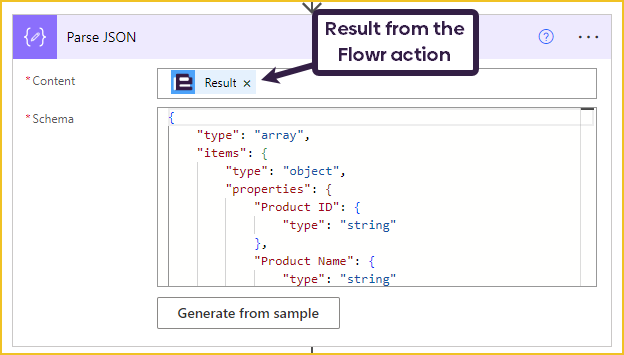
Now our data is in JSON format, we can loop through the body to add the data to SharePoint row by row. As mentioned, all the data in our JSON will be in string format. This means when we are adding numbers to SharePoint, we need to convert the string to an integer for the quantity value and to a float for the unit price value. We can achieve this using the following expressions:
int(items('Apply_to_each')?['Quantity'])
float(items('Apply_to_each')?['Unit Price'])
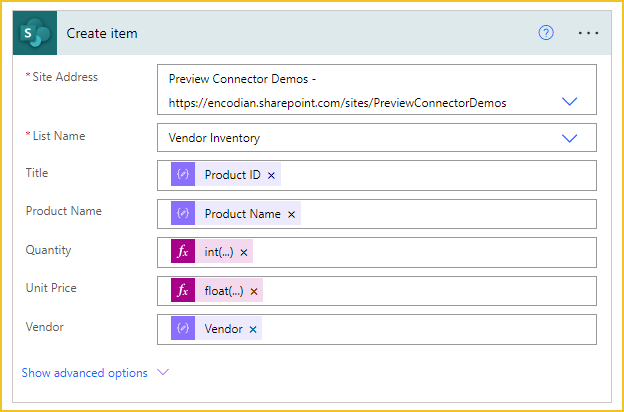
This is the email head office has received from their GearInc store:

This is what the inventory PDF looks like for GearInc:

Once the email is received, the Power Automate automatically runs because the filter conditions are met (having ‘Inventory’ in the store line and an attachment in the email). This is what the results look like in the SharePoint list:
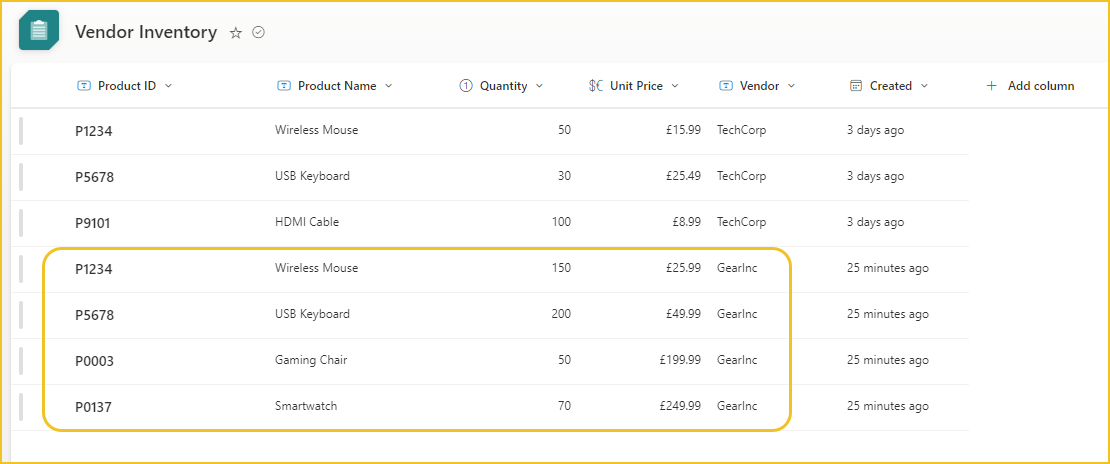
As we can see, the inventory lines have been added correctly.
We hope you enjoy easy automation with one of our newest actions: PDF – Extract Table Data
Check out Sophie’s companion video on YouTube!
Save time with 200+ actions across 9 connectors
Sign up for your free 30-day trial; no cards, catches, or contracts.
Don’t struggle! Try out our Premium Support packages today.
Technical Evangelist